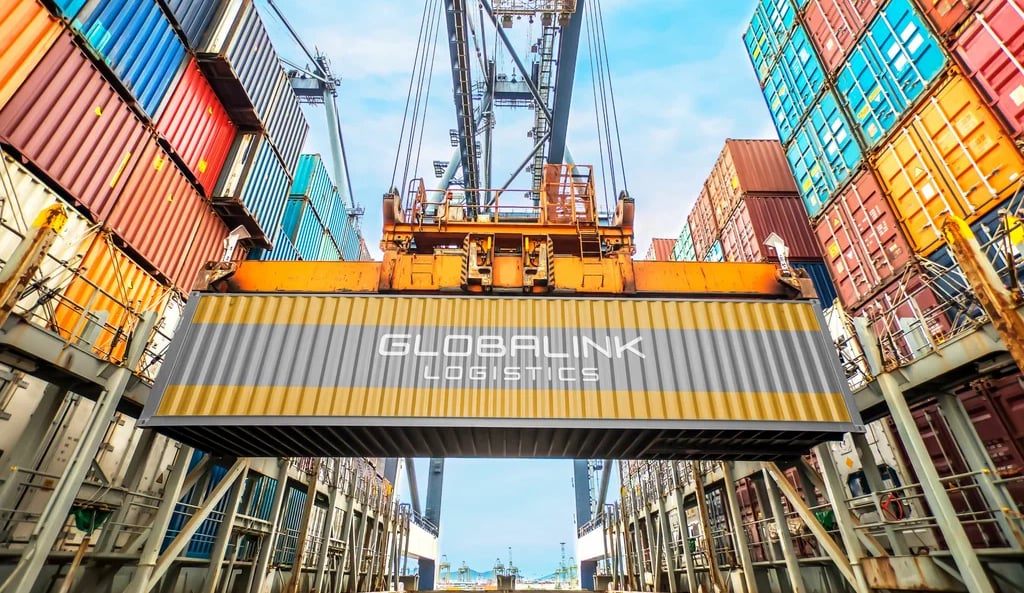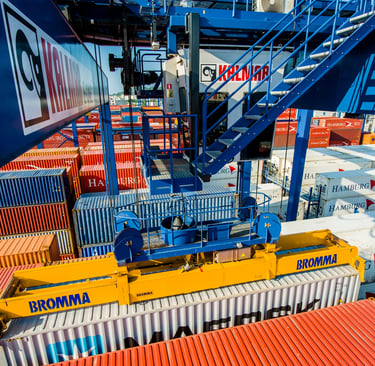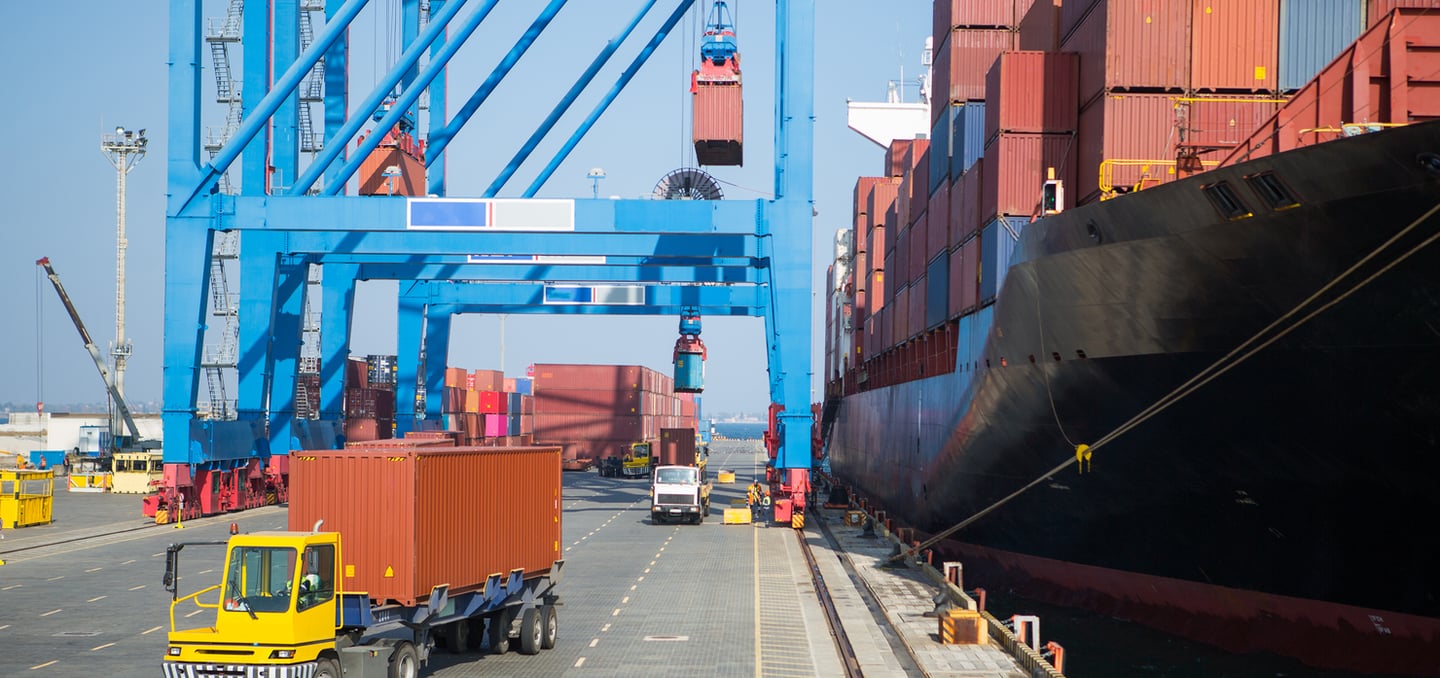📞+86 153 7530 2641 📧 hongjing.Wang@feichuncables.com
How Should Construction Lift Cables Be Installed Safely for Basket Applications in Port Environments?
Proper installation of construction lift cables in man basket systems is critical for port operations. Learn expert-approved techniques, safety notes, and cable winding practices to ensure reliable performance in harsh marine and lifting environments.
hongjing.Wang@Feichun
7/14/2025
Introduction: Why Cable Installation Matters in Port Basket Applications
The role of construction lift cables in suspended man basket systems cannot be overstated in port operations. These specialized cables serve as the lifeline for personnel working at height, transferring power and control signals between ground-based equipment and elevated work platforms. In port environments, where workers must access ship cargo areas, crane maintenance points, and elevated port infrastructure, man basket cable safety becomes paramount.
Port environments present unique challenges that make proper cable installation even more critical. The harsh marine conditions expose equipment to constant salt spray, moisture, and corrosive elements that can rapidly degrade improperly installed cables. Additionally, port operations involve significant vibration from heavy machinery, unpredictable wind conditions, and temperature fluctuations that can stress cable systems beyond their design limits if not properly installed.
The importance of safe handling and compliant mounting methods extends beyond immediate safety concerns. Properly installed construction lift cables ensure consistent performance, reduce maintenance costs, and minimize operational downtime. When port basket lift cable installation follows manufacturer specifications and industry best practices, the result is a reliable system that can withstand the demanding conditions of marine environments while maintaining the safety of personnel who depend on these systems daily.


Choosing the Right Lift Cable for Basket Applications
Selecting appropriate construction lift cables for basket applications requires understanding the specific demands of port environments. The preferred cable features include exceptional flexibility to accommodate the constant movement inherent in basket operations, torsion-free behavior to prevent cable damage during winding and unwinding cycles, and robust resistance to UV radiation, oil contamination, and salt exposure.
Recommended cable types for construction hoist cable in marine environments typically feature PUR (polyurethane) outer sheaths, which provide superior resistance to abrasion, chemicals, and environmental extremes. These cables incorporate copper fine-stranded conductors that maintain flexibility while ensuring reliable electrical conductivity under repeated flexing cycles. The fine stranding construction allows the cable to bend repeatedly without conductor failure, essential for basket applications where cables experience constant movement.
Understanding stranding direction proves crucial for proper installation. Cables are manufactured with either Z or S stranding patterns, which determine how the cable behaves under tension and during winding operations. Z stranding requires clockwise winding, while S stranding necessitates counter-clockwise winding. This fundamental characteristic affects how the cable releases tension during operation and directly impacts the installation procedure.
When selecting torsion-free construction basket cables, prioritize those designed specifically for lifting applications. These cables feature specialized construction that minimizes twisting forces during operation, reducing wear and extending service life. For lift cable with PUR jacket for ports, ensure the cable meets marine environment specifications, including resistance to salt water, UV exposure, and temperature extremes commonly encountered in port operations.
Pre-Installation Checklist: Preparing the Cable
Proper preparation forms the foundation of successful cable installation. Begin by unwinding the cable tangentially from the reel to avoid introducing twists that can cause problems during installation and operation. This critical step requires careful attention, as improper unwinding can lock torsion into the cable, leading to premature failure and safety hazards.
After unwinding, lay the cable loosely on the ground to check for any inherent torsion. The cable should lie flat without forming loops or twists. If torsion is present, it must be eliminated before proceeding with installation. This inspection phase allows identification of any manufacturing defects or damage that occurred during shipping or handling.
Determine the correct cable length by calculating the maximum extension distance plus additional length for proper layering within the basket. A crucial requirement is ensuring some layers remain in the basket even at full extension. This prevents overstretching the cable and maintains proper mechanical support for the electrical conductors.
Q: What happens if I don't unwind the cable tangentially from the reel?
Q: How do I know if the cable has torsion after unwinding?
A: Improper unwinding introduces torsion into the cable, which can cause figure-eight loops, excessive undulation, and premature wear. This torsion becomes locked into the cable structure and may not be eliminated during normal operation, leading to reduced cable life and potential safety hazards.
A: Lay the cable loosely on the ground in a straight line. If the cable naturally forms loops, twists, or doesn't lie flat, torsion is present. The cable should rest in a straight line without any inherent twisting motion.
Cable Mounting Procedure (As per Manufacturer Instructions)
The mounting procedure follows a specific sequence designed to ensure proper cable behavior throughout its operational life. Feed the cable from the top to the bottom of the basket, maintaining the natural lay of the cable without forcing it into position. This approach prevents stress concentration that could lead to conductor damage or insulation failure.
Route the cable through the basket bottom into the connection box, ensuring adequate strain relief at all entry points. The cable path should be smooth and free from sharp edges or pinch points that could cause damage during operation. Pay particular attention to the transition points where the cable changes direction, as these areas experience the highest stress during lifting operations.
Drop the cable into the basket following the correct directional pattern based on the stranding direction. For Z stranding, drop the cable in clockwise direction; for S stranding, use counter-clockwise direction. This directional alignment ensures the cable's natural tendency to unwind matches the operational requirements, preventing loop formation and excessive wear.
After making connections to the lift system, perform one complete test cycle before putting the system into operation. During this test, visually inspect the cable for figure-eight loops, high undulation, or signs of axial stress. These conditions indicate improper installation that must be corrected before operational use.
If faults are discovered during inspection, disconnect the cable at the lift side and rotate it axially to eliminate the problems. This correction process may require multiple attempts to achieve proper cable lay. The investment in proper installation pays dividends in extended cable life and safe operation.
Q: What should I do if figure-eight loops appear during the test cycle?
Q: How many cable layers should remain in the basket at maximum extension?
A: Disconnect the cable at the lift connection and rotate it axially in the direction opposite to the loop formation. Continue rotating until the loops disappear, then reconnect and test again. This process may need to be repeated several times to achieve proper cable lay.
A: Manufacturer specifications typically require a minimum of 2-3 layers to remain in the basket at full extension. This ensures adequate mechanical support for the cable and prevents overstretching that could damage the conductors.


Handling Guidelines Based on Stranding Direction (Z vs S)
Understanding and properly implementing stranding direction guidelines is crucial for successful installation. Cable winding and unwinding must match the cable's stranding direction to prevent loop buildup and premature wear. Incorrect handling creates internal stresses that accumulate over time, leading to conductor failure and safety hazards.
Visual identification of stranding direction follows a simple rule: clockwise lay indicates Z stranding, while counter-clockwise lay indicates S stranding. This identification must be made before beginning the installation process, as it determines the entire handling procedure.
For Z stranding cables, wind the cable clockwise into the basket and allow it to unwind counter-clockwise during operation. The reverse applies to S stranding cables. This matching of natural cable behavior with operational requirements ensures smooth operation and maximum cable life.
Port crane man basket wiring systems benefit significantly from proper stranding direction handling. The constant cycling inherent in port operations amplifies any installation errors, making correct initial installation even more critical than in less demanding applications.
Q: How can I identify the stranding direction of my cable?
Q: What happens if I install a cable with incorrect stranding direction handling?
A: Examine the cable's outer construction. If the visible strands spiral in a clockwise direction when viewed from the end, it's Z stranding. If they spiral counter-clockwise, it's S stranding. This information should also be marked on the cable jacket or provided in the manufacturer's documentation.
A: The cable will develop internal stresses that manifest as loops, excessive undulation, and premature wear. These conditions can lead to conductor failure, insulation breakdown, and potential safety hazards during operation.


Common Installation Mistakes to Avoid
Several common mistakes can compromise the safety and reliability of construction lift cable installations. Pulling cable under tension with torsion locked in represents one of the most serious errors. This practice embeds stress into the cable structure that cannot be eliminated during normal operation, leading to premature failure and safety risks.
Overstretching the cable by not maintaining adequate slack layers in the basket creates similar problems. When cables are stretched beyond their design limits, the conductors experience excessive stress that can cause gradual degradation and eventual failure. Always ensure sufficient cable remains in the basket at maximum extension to prevent this condition.
Installing cables with damage from improper reel handling compromises the entire system. Inspect cables thoroughly before installation, looking for kinked conductors, damaged insulation, or deformed outer sheaths. Any damage discovered during inspection requires cable replacement before proceeding with installation.
Another frequent mistake involves ignoring manufacturer specifications for cable routing and support. Each cable design has specific requirements for bend radius, support spacing, and strain relief. Deviation from these specifications can cause premature failure even when other installation aspects are correct.
Q: Can I repair minor cable damage found during installation?
A: No, cables with any damage should be replaced rather than repaired. The harsh port environment and critical safety requirements of man basket applications demand cables in perfect condition. Repairs may fail under operational stress, creating safety hazards.
Environmental Considerations for Port Use
Port environments present unique challenges that must be addressed during cable selection and installation. Constant exposure to moisture and salt spray requires cables with superior seal integrity and corrosion-resistant materials. Standard industrial cables may not provide adequate protection in these demanding conditions.
Operation in wind, cold, or intense sun adds thermal cycling stress that can cause cable degradation over time. Temperature fluctuations cause expansion and contraction cycles that stress conductor connections and insulation materials. Select cables designed to withstand these environmental extremes without performance degradation.
Marine construction hoist cables must incorporate ruggedized construction features including reinforced outer sheaths and internal water-blocking elements. These features prevent moisture ingress that could cause conductor corrosion or insulation failure. The investment in marine-grade cables pays dividends in extended service life and reduced maintenance requirements.
UV resistance becomes particularly important in port environments where cables may be exposed to intense sunlight for extended periods. UV degradation can cause outer sheath cracking, leading to moisture ingress and eventual cable failure. Ensure selected cables incorporate UV-resistant materials throughout their construction.
Q: How do I protect cables from salt spray corrosion?
A: Use cables with marine-grade PUR outer sheaths and corrosion-resistant conductor materials. Additionally, implement regular cleaning procedures to remove salt deposits and apply protective treatments as recommended by the manufacturer.
Compliance and Safety Standards
Proper installation must comply with relevant safety standards and regulations governing lifting equipment electrical systems. IEC 60204-32 provides comprehensive requirements for electrical equipment in hoisting devices, including specific provisions for man basket applications. This standard covers conductor sizing, insulation requirements, and protection methods essential for safe operation.
Regional standards such as AS/NZS or EN equivalents may apply depending on the port's location and regulatory jurisdiction. These standards often incorporate additional requirements for marine environments, including enhanced protection against corrosion and environmental exposure.
Port authority safety inspections and certifications typically require documentation of proper installation procedures and compliance with applicable standards. Maintain detailed records of cable specifications, installation procedures, and test results to demonstrate compliance during inspections.
Regular recertification may be required to maintain operational approval, making proper initial installation and ongoing maintenance documentation essential for continued operation. Work with qualified personnel familiar with local regulatory requirements to ensure full compliance.
Q: What documentation is required for regulatory compliance?
A: Maintain records of cable specifications, installation procedures, test results, and periodic inspections. Documentation should include proof of compliance with applicable standards and evidence of proper installation techniques. Consult local regulatory authorities for specific requirements in your jurisdiction.
Conclusion: Ensuring Safety, Flexibility, and Long-Term Operation
Successful construction lift cable installation in port basket applications requires careful attention to every aspect of the process, from initial cable selection through final testing and commissioning. The mounting procedure, while straightforward in concept, demands precise execution to ensure safe and reliable operation in the challenging port environment.
Emphasis on torsion-free, loop-free, compliant installation cannot be overstated. These requirements directly impact both safety and operational reliability, making proper installation techniques essential for successful port operations. The time invested in correct installation procedures pays dividends in extended cable life, reduced maintenance costs, and most importantly, enhanced safety for personnel who depend on these systems.
The suggestion to always test the system before operational use serves as a final safeguard against installation errors that could compromise safety. This testing phase allows identification and correction of problems before they can affect operations or endanger personnel. Combined with proper cable selection, careful installation procedures, and compliance with safety standards, this comprehensive approach ensures reliable performance in the demanding port environment.
By following these guidelines and maintaining attention to detail throughout the installation process, port operators can achieve the dual goals of operational efficiency and uncompromising safety in their man basket systems. The investment in proper installation techniques and quality cables provides the foundation for years of reliable service in the challenging marine environment that defines port operations.
How to Reach Us
Get in Touch
SiteMap
Product Catalogue
Reeling Cable
Festoon Cable
Shore Power Cable




Scan to add us on WeChat
